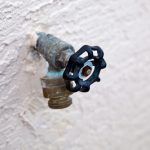We clean out your drains... Not your wallet!
Call Us now at (719) 964-8310!
How to Locate Underground Sewer Lines in Four Easy Steps
Getting ready to dig on your property? Before you do any excavation work at your property, no matter the scope, you need to get a clear picture of the precise location of underground utility lines, including sewer lines. There are countless obstacles for utilities and excavating contractors doing underground work, and you need to know their exact locations to keep workers safe and prevent any damage to expensive municipal property. Here’s how you can locate underground sewer lines in four easy steps.
Call 811
One of the easiest ways to locate sewer lines before hiring excavating contractors do work on your property is by calling 811. This number connects you to a nationwide service to give you all the information you need to request the location of all underground infrastructure on your property. Calling 811 ensures you know where it’s safe to dig, and requests can be completed within two to three days and typically are effective for 30 days. It’s the law to wait for this request to be completed, so remain patient before you dig.
Document the excavation
It’s smart to take plenty of pictures before, during and after excavation. Keep in mind that in some cases the actual location of utility lines compared to ground markings can be quite different. Take visual documentation of where the lines are located.
Use the right equipment
Another practical way of locating underground sewer lines is with a pipe locator. They can be purchased or rented, but it’s best to hire a professional plumbing company to do the job right since they have access to and deep knowledge of this type of equipment. Detector lines are fed about 15 feet into a sewer cleanout or drain. A strong beeping signal will indicate you’ve made it to the end of the line, where you should mark the location with a flag.
Do the same process over again to check your work and place a second utility flag in the location when you’re done. This can be a tedious process for those who aren’t used to this equipment, so it’s usually best to rely on the professionals.
Dig with care
Overall, it’s important to keep lives and property safe whenever digging. Always take great care to dig in the designated “Safe Zone,” which is more than four feet on either side of utility markings. If you’re closer than four feet, you’re working in the “Caution Zone.” Working in this area requires hand-exposing utility lines to determine their exact location before digging. Remember that water lines have a 36-inch minimum bury depth, but it’s not uncommon to find other lines in the trench that cross over utilities at intersections.
Excavation work is risky business if you’re unsure of the location of underground sewer lines. Always work with professional excavation contractors to ensure your safety and the safety of municipal property. Contact Affordable Rooter today to learn more about the complex relationship between underground utilities and excavation work. We look forward to assisting on your project.




Contact
Business Hours
- Mon - Fri
- -
- Sat - Sun
- Appointment Only
